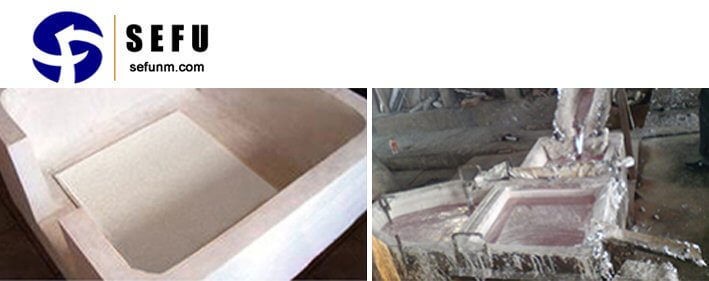Alumina ceramic filter has revolutionized aluminium filtration processes across industries, offering exceptional thermal stability, chemical resistance, and high filtration efficiency. This essay explores the fascinating story behind the origin of alumina ceramic filters and provides an in-depth analysis of their manufacturing process, highlighting the remarkable advancements in materials science and engineering.
Ⅰ. The Story of Alumina Ceramic Filter
The origins of alumina ceramic filters can be traced back to the mid-20th century when the need for efficient molten metal filtration solutions became increasingly evident. Researchers and engineers were driven by the desire to develop a versatile and reliable filter that could withstand extreme conditions while providing exceptional filtration performance. The pursuit of such a filter led them to alumina, a compound composed primarily of aluminum oxide (Al2O3).
Alumina, known for its excellent thermal and chemical properties, emerged as a promising material for filtration applications. Researchers began experimenting with alumina-based ceramics, exploring different compositions and manufacturing techniques to optimize the desired properties. Gradually, they discovered that alumina ceramic filters exhibited remarkable temperature resistance, chemical inertness, and mechanical strength, making them ideal for a wide range of industries.
The application of alumina ceramic filters expanded rapidly, finding use in industries such as metal casting, chemical processing, and environmental filtration. These filters proved instrumental in removing impurities, contaminants, and particulate matter from various substances, enabling enhanced product quality and process efficiency.
Ⅱ. Alumina Ceramic Filter Manufacturing Process
Raw Material Preparation:
The manufacturing process of alumina ceramic filters begins with the careful selection and preparation of raw materials. High-purity alumina powders, derived from bauxite or alumina ore, are typically used. The powders are subjected to grinding, milling, and mixing processes to achieve a consistent particle size distribution and homogenous blend. Other additives, such as binders and plasticizers, may be incorporated to enhance the forming process.
Forming:
Forming is a critical step in alumina ceramic filter manufacturing. There are various techniques employed, including dry pressing, slip casting, extrusion, and tape casting.
Dry Pressing: In this method, the prepared alumina powder is compacted into the desired shape using a hydraulic press. Pressure is applied to the powder within a die, creating a green body with the desired dimensions.
Slip Casting: Slip casting involves the creation of a slurry by suspending the alumina powder in a liquid medium, typically water or an organic solvent. The slurry is poured into a porous mold, and the liquid is gradually removed, allowing the ceramic particles to settle and form a solid green body.
Extrusion: Extrusion is commonly used to produce filters with complex geometries. The alumina powder, mixed with a plasticizer and binder, is forced through a die using a ram or screw mechanism. The extruded material is then cut into the desired shape and dried.
Tape Casting: Tape casting is a method used to produce thin and flat ceramic sheets. The alumina slurry is spread onto a flat surface using a doctor blade, and the excess liquid is removed. The resulting tape is then dried and cut to the required dimensions.
Drying:
After forming, the green bodies undergo a drying process to remove moisture and binders. Controlled drying is crucial to prevent cracking or warping of the ceramic bodies. Common drying techniques include air drying, freeze drying, or using drying ovens.
Firing:
Firing, or sintering, is a critical step that imparts the desired mechanical and thermal properties to the alumina ceramic filters. The green bodies are heated in a high-temperature furnace, typically at temperatures above 1500 degrees Celsius. During the firing process, the ceramic particles bond together, creating a dense and rigid structure. The firing conditions, including temperature, duration, and atmosphere, are carefully controlled to achieve the desired properties.
Finishing and Quality Control:
After firing, the alumina ceramic filters undergo finishing processes to achieve the final product specifications. This may involve machining, grinding, polishing, or surface treatment. Quality control measures, such as dimensional inspection, pore size analysis, and filtration efficiency testing, are performed to ensure the filters meet the required standards.
Conclusion
Alumina ceramic filters have come a long way since their inception, transforming filtration processes across numerous industries. The remarkable properties of alumina, coupled with advancements in materials science and engineering, have enabled the manufacturing of robust and high-performance filters. The careful selection and preparation of raw materials, followed by forming, drying, firing, and finishing processes, result in the production of alumina ceramic filters with exceptional thermal stability, chemical resistance, and filtration efficiency. As industries continue to prioritize quality, efficiency, and sustainability, alumina ceramic filters will continue to play a vital role in driving innovation and improving filtration processes.


